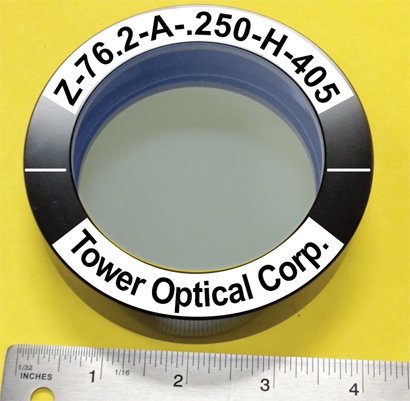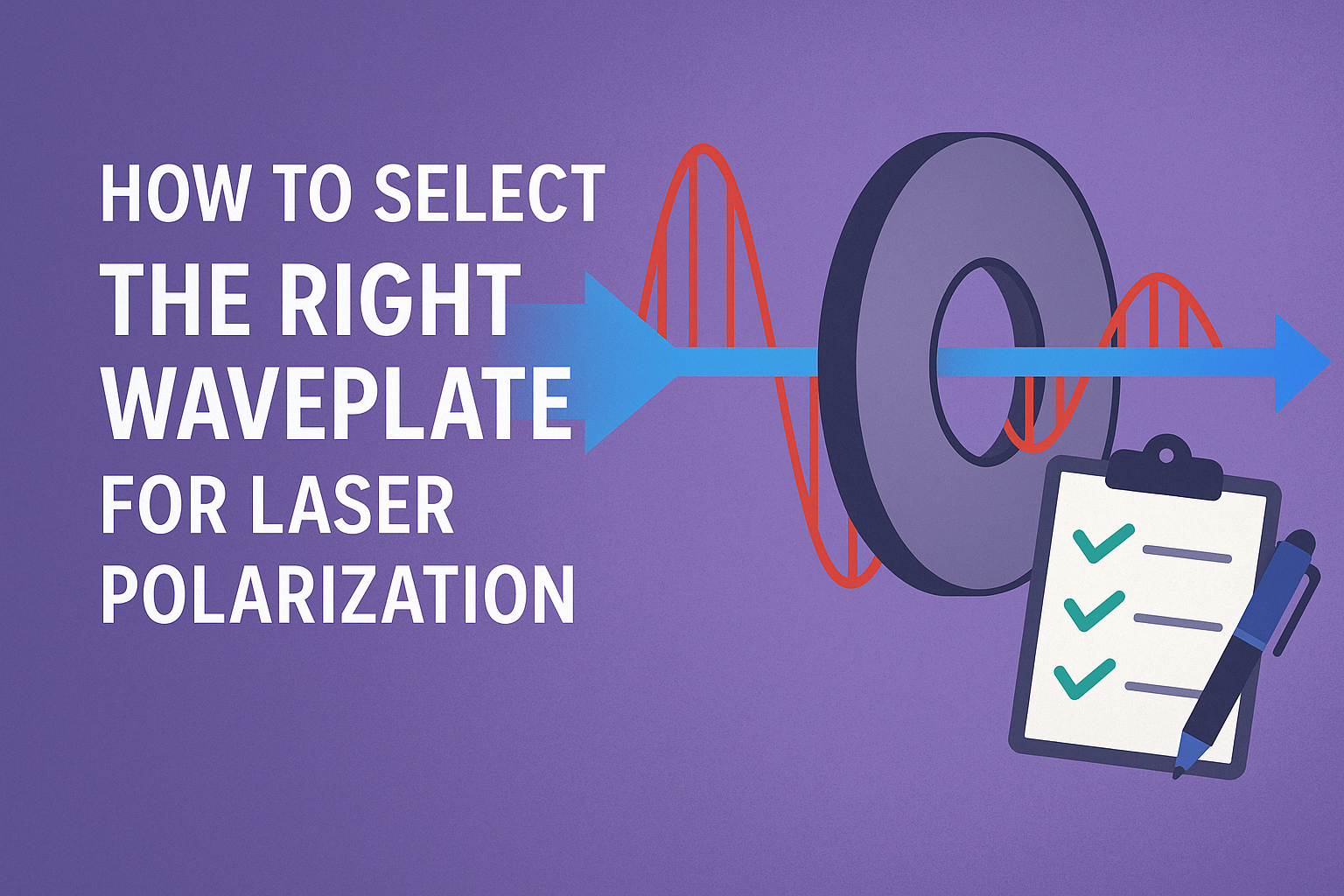Visit Tower Optical booth (2026) at SPIE Photonics West from January 29 to February 1, 2024.
Tuesday, 23 January, 2024
Enhancing Imaging Systems with Optics
Thursday, 22 February, 2024Outline:
- Introduction
- Brief overview of waveplates
- Importance in optical physics
- Understanding Waveplates
- Definition and types
- How waveplates work
- The Role of Waveplates in Optical Communications
- Enhancing fiber optic systems
- Polarization control in telecommunications
- Advancements in Quantum Computing
- Quantum state manipulation
- Waveplates in quantum encryption
- Innovations in Medical Imaging
- Polarized light microscopy
- Waveplates in diagnostic techniques
- Precision in Optical Instrumentation
- Role in polarimeters and ellipsometers
- Applications in material science
- Exploration of the Cosmos
- Waveplates in astronomical telescopes
- Analyzing celestial polarization
- Enhancing Laser Technology
- Polarization management in lasers
- Applications in industry and medicine
- Photography and Art
- Waveplates in artistic photography
- Creative applications
- Improvements in Display Technology
- Liquid crystal displays (LCDs)
- Role of waveplates in contrast and color
- Research and Development
- Waveplates in experimental physics
- Future technologies
- Education and Training
- Teaching optical physics
- Waveplates in educational kits
- Environmental Monitoring
- Polarization in remote sensing
- Waveplates in satellite imagery
- Defense and Security
- Secure communications
- Polarization in surveillance
- Manufacturing and Quality Control
- Inspection with polarized light
- Waveplates in precision manufacturing
- Augmented Reality (AR) and Virtual Reality (VR)
- Enhancing immersive experiences
- Role of waveplates in display systems
- Automotive Industry
- Waveplates in head-up displays
- Safety and visibility enhancements
- Consumer Electronics
- Waveplates in smartphone cameras
- Enhancements in personal devices
- Challenges and Limitations
- Technical challenges
- Overcoming current limitations
- The Future of Waveplates
- Emerging applications
- Innovations on the horizon
- Conclusion
- Recap of waveplate applications
- Final thoughts on their impact in technology
Top Applications for Waveplates in Technology: Changing the Game
Introduction
Waveplates, those marvels of optical physics, are pivotal in the manipulation of light, more specifically, its polarization. This article delves into the myriad applications of waveplates across various technological fields, highlighting their significance and transformative impact.
Understanding Waveplates
Definition and Types: At their core, waveplates are devices designed to alter the polarization state of light passing through them. They come in two primary types: half-wave plates, which shift the polarization direction of light, and quarter-wave plates, which convert linear polarization to circular polarization, and vice versa.
How Waveplates Work: Employing birefringent materials, waveplates operate by introducing a phase shift between the orthogonal polarization components of light. This phase shift is crucial for controlling the light’s polarization, enabling a plethora of technological applications.
The Role of Waveplates in Optical Communications
Enhancing Fiber Optic Systems: In the realm of telecommunications, waveplates are indispensable. They refine the signal quality in fiber optic cables, ensuring that data traverses vast distances with minimal loss.
Polarization Control in Telecommunications: By managing the polarization of light, waveplates significantly reduce the error rates in optical communication systems, making them more efficient and reliable.
Advancements in Quantum Computing
Quantum State Manipulation: Waveplates are at the forefront of quantum computing, facilitating the precise control of quantum states. This precision is vital for the development of quantum algorithms and encryption techniques.
Waveplates in Quantum Encryption: They ensure the security of quantum communication channels, safeguarding information against eavesdropping by manipulating photons in a way that any interference is detectable.
Innovations in Medical Imaging
Polarized Light Microscopy: In medical diagnostics, waveplates enhance the contrast in images obtained via polarized light microscopy, providing unprecedented clarity and detail that is crucial for accurate diagnoses.
Waveplates in Diagnostic Techniques: Their ability to manipulate polarized light is also exploited in various diagnostic tools, improving the detection and analysis of diseases at the cellular level.
Precision in Optical Instrumentation
Role in Polarimeters and Ellipsometers: Waveplates are key components in devices measuring the polarization of light, aiding in the study of material properties and the analysis of chemical compositions.
Applications in Material Science: Through precise polarization control, waveplates facilitate the exploration of novel materials, including those with unique optical properties.
Exploration of the Cosmos
Waveplates in Astronomical Telescopes: Astronomers rely on waveplates to analyze the light from distant stars and galaxies, shedding light on the universe’s most profound mysteries.
Analyzing Celestial Polarization: This analysis provides insights into the physical conditions of celestial bodies, including their magnetic fields and atmospheric composition.
Enhancing Laser Technology
Polarization Management in Lasers: In laser technology, waveplates optimize the polarization state for various applications, from industrial cutting to medical surgery, enhancing efficiency and precision.
Applications in Industry and Medicine: Their use in lasers exemplifies the dual nature of waveplates’ applications, serving both practical and innovative needs in diverse fields.
Photography and Art
Waveplates in Artistic Photography: Waveplates open new avenues in photography, allowing artists to experiment with light polarization for creative effects, thereby expanding the artistic repertoire available to photographers.
Creative Applications: Beyond traditional uses, waveplates empower artists to manipulate light in unique ways, bringing unseen perspectives to the forefront of visual art.
Improvements in Display Technology
Liquid Crystal Displays (LCDs): Waveplates are integral to the function of LCDs, improving image quality by controlling light polarization, thus enhancing contrast and color accuracy.
Role of Waveplates in Contrast and Color: Their precise control over light polarization allows for the production of clearer, more vibrant displays in televisions, monitors, and smartphones.
Research and Development
Waveplates in Experimental Physics: The experimental realm of physics benefits greatly from waveplates, enabling researchers to probe the fundamental properties of light and matter.
Future Technologies: As tools for exploration and discovery, waveplates continue to facilitate advancements in optical physics and related fields, promising to usher in new technological revolutions.
Education and Training
Teaching Optical Physics: Waveplates serve as excellent educational tools, illustrating the complex nature of light polarization and its applications, thereby enriching the learning experience for students.
Waveplates in Educational Kits: Their inclusion in educational kits demystifies advanced concepts in optical physics, making them accessible to learners at various levels.
Environmental Monitoring
Polarization in Remote Sensing: In the field of environmental monitoring, waveplates enhance the capabilities of remote sensing technologies, improving the accuracy of satellite imagery used for tracking changes in the Earth’s surface.
Waveplates in Satellite Imagery: By manipulating the polarization of light, waveplates aid in the detailed analysis of environmental data, contributing to better-informed conservation and management efforts.
Defense and Security
Secure Communications: In the domain of defense and security, waveplates fortify communication systems, ensuring that sensitive information remains protected through advanced polarization techniques.
Polarization in Surveillance: They also enhance surveillance capabilities, allowing for more precise monitoring and analysis, thereby bolstering national and international security measures.
Manufacturing and Quality Control
Inspection with Polarized Light: Waveplates are crucial in manufacturing, where they are used in inspection processes to identify defects with unparalleled accuracy, ensuring the highest quality standards.
Waveplates in Precision Manufacturing: Their ability to precisely control polarized light makes waveplates invaluable tools in the meticulous examination of manufactured goods, from electronics to automotive components.
Augmented Reality (AR) and Virtual Reality (VR)
Enhancing Immersive Experiences: In AR and VR, waveplates improve the quality of immersive experiences by optimizing the polarization of light in display systems, making virtual worlds more vivid and lifelike.
Role of Waveplates in Display Systems: Their precise control over light polarization is key to reducing glare and enhancing clarity, thereby elevating the user experience in augmented and virtual realities.
Automotive Industry
Waveplates in Head-up Displays: The automotive industry benefits from waveplates through their application in head-up displays (HUDs), which project critical information directly into the driver’s line of sight, enhancing safety and convenience.
Safety and Visibility Enhancements: By improving the visibility of HUDs, waveplates contribute to safer driving conditions, reducing the risk of accidents and enhancing the overall driving experience.
Consumer Electronics
Waveplates in Smartphone Cameras: In consumer electronics, waveplates improve the performance of smartphone cameras, allowing for better image quality by controlling light polarization.
Enhancements in Personal Devices: Their application extends to various personal devices, where they enhance functionality and user experience, from wearables to portable entertainment systems.
Challenges and Limitations
Technical Challenges: Despite their wide-ranging applications, waveplates face technical challenges, including material limitations and design complexities, which researchers are actively working to overcome.
Overcoming Current Limitations: The ongoing development of new materials and fabrication techniques promises to address these challenges, expanding the potential applications of waveplates further.
The Future of Waveplates
Emerging Applications: As technology advances, waveplates are set to play even more critical roles in emerging applications, from ultra-secure communications to advanced computing systems.
Innovations on the Horizon: The future of waveplates is bright, with ongoing research and development paving the way for new innovations that will continue to push the boundaries of technology.
Conclusion
Waveplates are a testament to the transformative power of optical physics, driving advancements across a broad spectrum of technologies. From enhancing telecommunications to unlocking new realms in quantum computing, their applications are as diverse as they are impactful. As we continue to explore and expand their capabilities, waveplates will undoubtedly remain at the forefront of technological innovation, illuminating the path toward a brighter, more advanced future.





